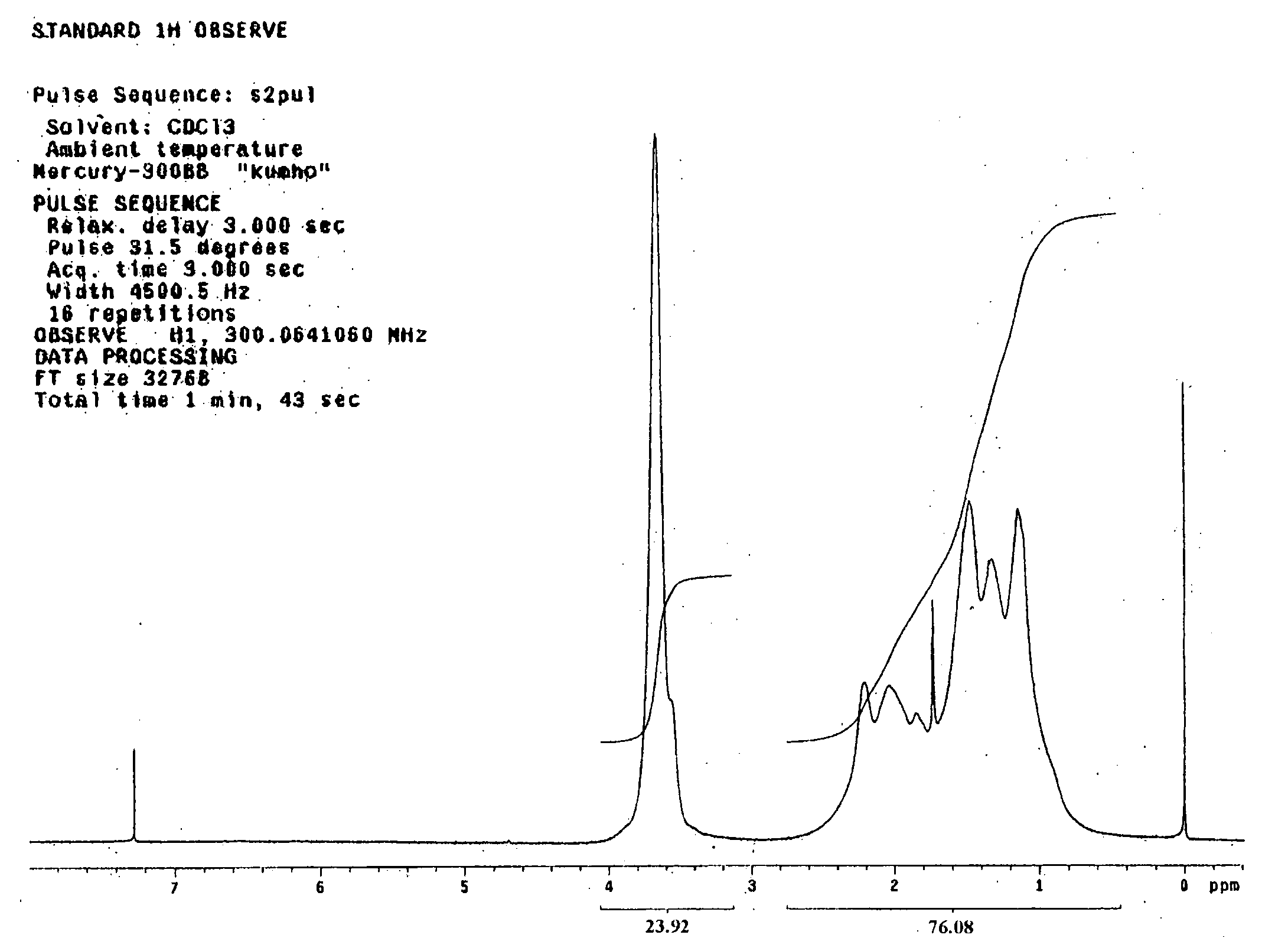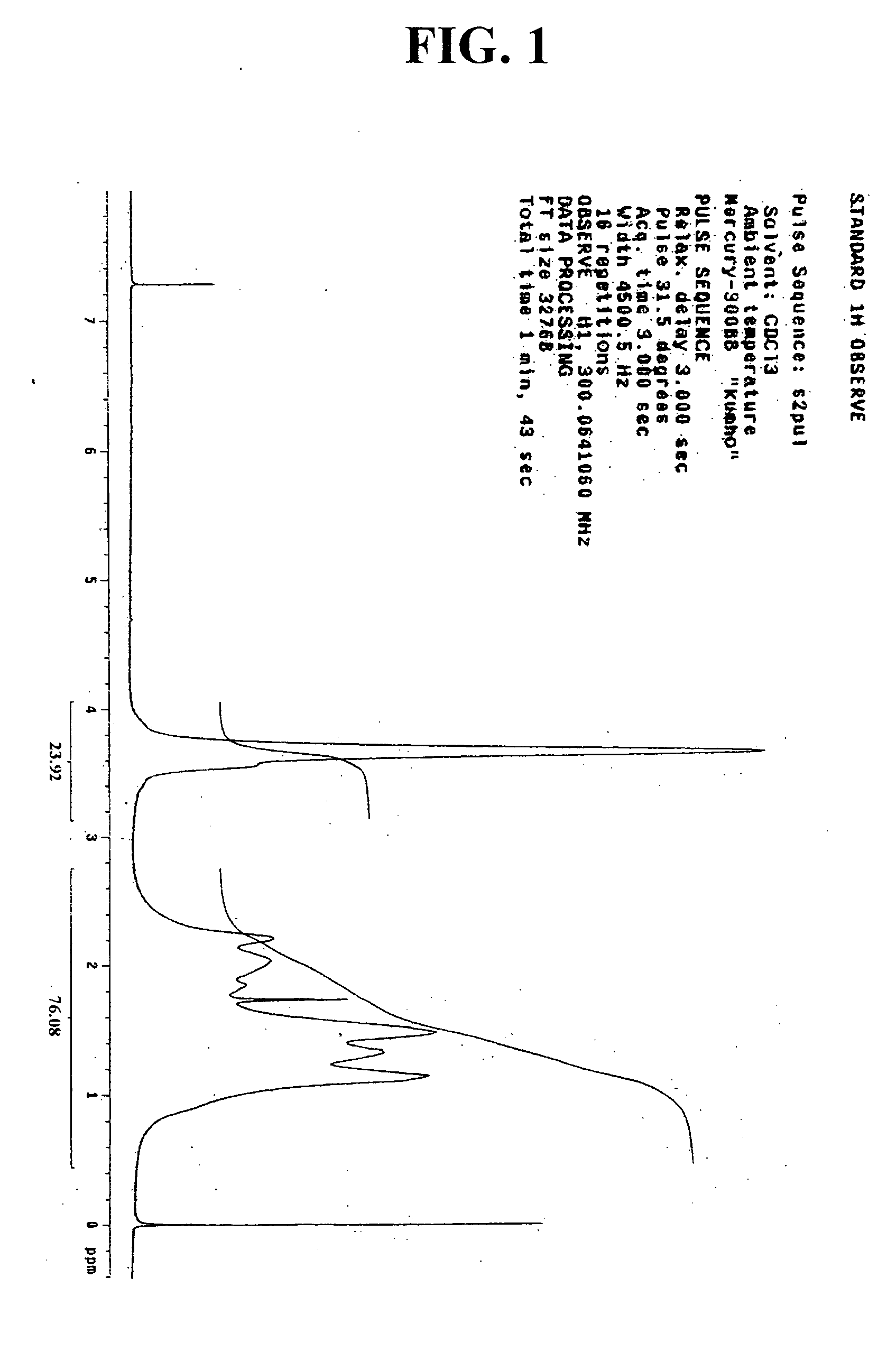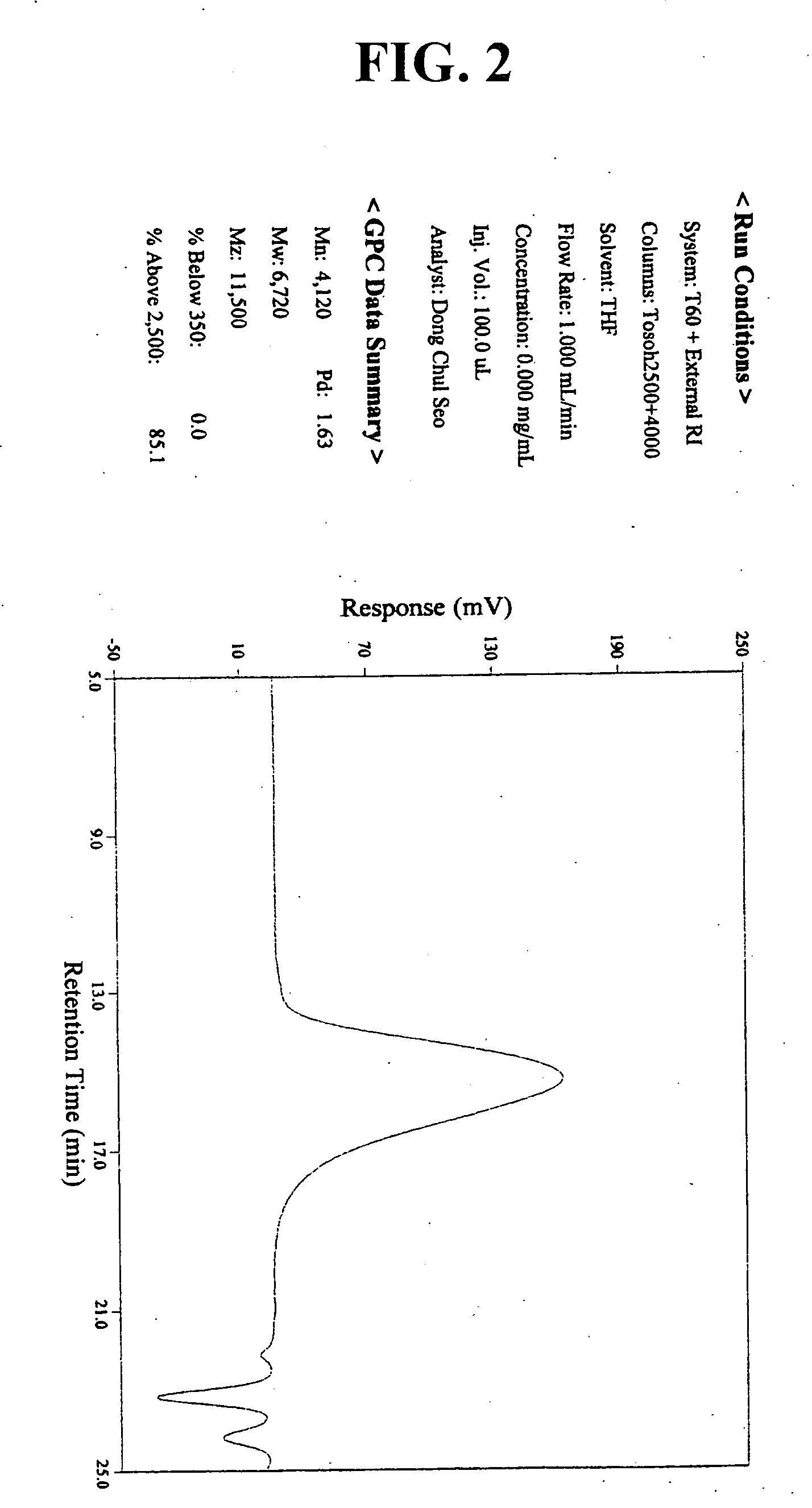Novel polymer and chemically amplified resist composition containing the same
- Summary
- Abstract
- Description
- Claims
- Application Information
AI Technical Summary
Benefits of technology
Problems solved by technology
Method used
Image
Examples
synthesis example 1
[0061] 44 g of norbornene and 2.6 g of dimethyl azobisisobutylate used as an initiator, together with 68 g of ethyl acetate were added to a reaction flask. The air in the flask was replaced with nitrogen gas, and the flask was heated to have its inner temperature raised to 70° C. At the inner temperature of 70° C., 10 g of methyl acrylate was slowly added dropwise with a syringe pump for 2 hours. After an 8-hour reaction at this temperature, the reaction mixture was added dropwise to 1.2 L of hexane. The precipitate thus obtained was filtered under vacuum and dried in a vacuum oven at 70° C. to obtain a polymer represented by the following Formula 4. The polymer thus obtained was analyzed in regard to its structure and substitution by 1H-NMR. The result is presented in FIG. 1. In addition, the molecular weight of the polymer was determined by GPC, of which the result is presented in FIG. 2.
[0062] Yield: 15 g;
[0063] Weight average molecular weight: 6,720;
[0064] Molecular weight di...
synthesis example 2
[0066] 44 g of norbornene and 2.6 g of dimethyl azobisisobutylate used as an initiator, together with 68 g of ethyl acetate were added to a reaction flask. The air in the flask was replaced with nitrogen gas, and the flask was heated to have its inner temperature raised to 70° C. At the inner temperature of 70° C., 11.6 g of methyl methacrylate was slowly added dropwise with a syringe pump for 2 hours. After an 8-hour reaction at this temperature, the reaction mixture was added dropwise to 1.2 L of hexane. The precipitate thus obtained was filtered under vacuum and dried in a vacuum oven at 70° C. to obtain a polymer represented by the following Formula 5. The polymer thus obtained was analyzed in regard to its structure and substitution by 1H-NMR. The result is presented in FIG. 3. In addition, the molecular weight of the polymer was determined by GPC, of which the result is presented in FIG. 4.
[0067] Yield: 15 g;
[0068] Weight average molecular weight: 6,200;
[0069] Molecular wei...
synthesis example 3
[0071] The producers were performed in the same manner as described in the Synthesis Example 1, excepting that 21.4 g of cyclohexyl methoxy acrylate was used instead of methyl acrylate. The final product was a polymer represented by the following Formula 6. The polymer thus obtained was analyzed in regard to its structure and substitution by 1H-NMR and in regard to its molecular weight by GPC.
[0072] Yield: 24.3 g;
[0073] Weight average molecular weight: 6,050;
[0074] Molecular weight distribution: 1.69;
[0075] Substitution analysis by 1H-NMR: l=0.41, m 0.59
PUM
| Property | Measurement | Unit |
|---|---|---|
| Percent by mass | aaaaa | aaaaa |
| Percent by mass | aaaaa | aaaaa |
| Weight | aaaaa | aaaaa |
Abstract
Description
Claims
Application Information
 Login to View More
Login to View More - R&D
- Intellectual Property
- Life Sciences
- Materials
- Tech Scout
- Unparalleled Data Quality
- Higher Quality Content
- 60% Fewer Hallucinations
Browse by: Latest US Patents, China's latest patents, Technical Efficacy Thesaurus, Application Domain, Technology Topic, Popular Technical Reports.
© 2025 PatSnap. All rights reserved.Legal|Privacy policy|Modern Slavery Act Transparency Statement|Sitemap|About US| Contact US: help@patsnap.com



